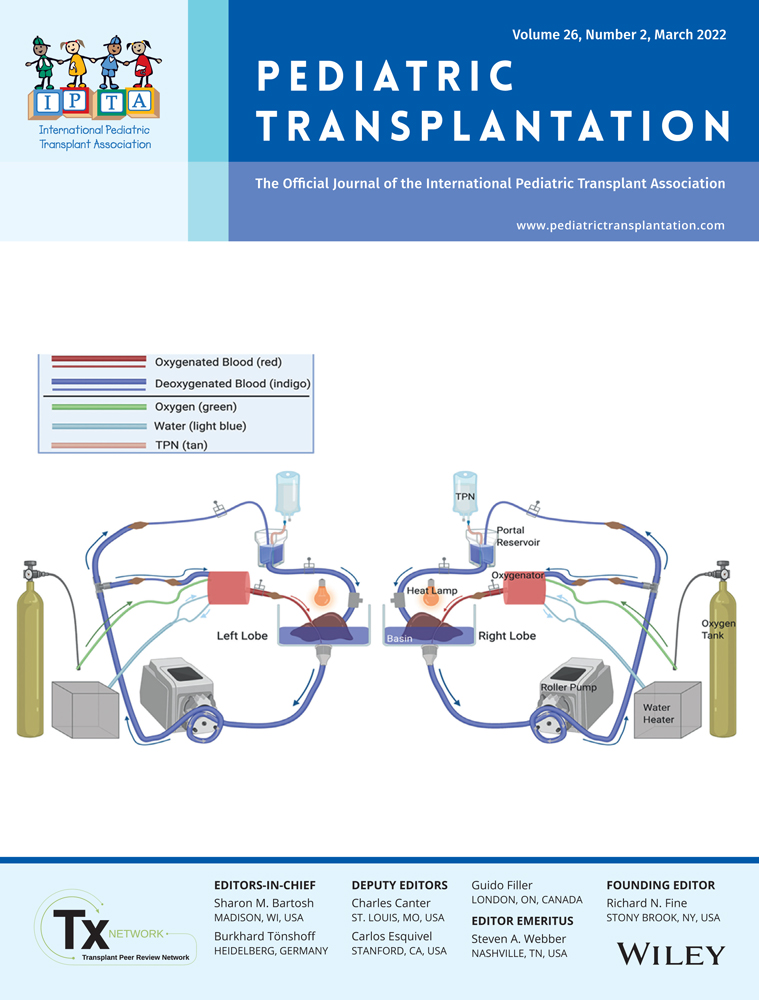Hematological and biochemical characteristics and diagnostic imaging results in acute T cell–mediated rejection after pediatric liver transplantation
Funding information
This work was supported by the Foundation for Growth Science (30-2)
[Correction added on 13 October 2021, after first online publication: The abstract section has been modified in this version.]
Abstract
Background
Liver biopsy is the gold standard for diagnosing TCMR after LT. However, complications caused by liver biopsy may occur especially during the immediate post-transplantation period and other effective methods for predicting TCMR have not been established. Thus, we investigated whether hematological and biochemical characteristics and Doppler ultrasonography findings are associated with acute TCMR.
Methods
A multiple logistic regression analysis was performed to identify the prognostic factors of acute TCMR, defined as a RAI ≥4. Then, a ROC curve analysis was conducted to evaluate for diagnostic performance. The relationship between prognostic factors and each histological category of RAI was investigated.
Results
Eighty-nine liver biopsies were performed on 85 patients between January 2012 and December 2019. The RAI of 62 (69.7%) liver biopsies was ≥4. AEC (×104/μl), direct bilirubin level (mg/dl), and MHVV (cm/s) were found to be associated with acute TCMR (OR: 4.96, 95% CI: 1.44–17.0, p = .011; OR: 1.41, 95% CI: 1.04–1.91, p = .025; OR: 1.05, 95% CI: 1.02–1.08, p < .001, respectively). The area under the ROC curves for predicting acute TCMR was 0.86 (95% CI: 0.78–0.94). There was a correlation between AEC, direct bilirubin level, and MHVV as well as the severity of RAI.
Conclusions
AEC, direct bilirubin level, and MHVV were the independent risk factors for acute TCMR. This study could provide information regarding the identification of patients requiring liver biopsy.
CONFLICT OF INTEREST
The authors have no conflicts of interest to disclose in relation to this article.
Open Research
DATA AVAILABILITY STATEMENT
The data that support the findings of this study are available on request from the corresponding author. The data are not publicly available due to privacy or ethical restrictions.




